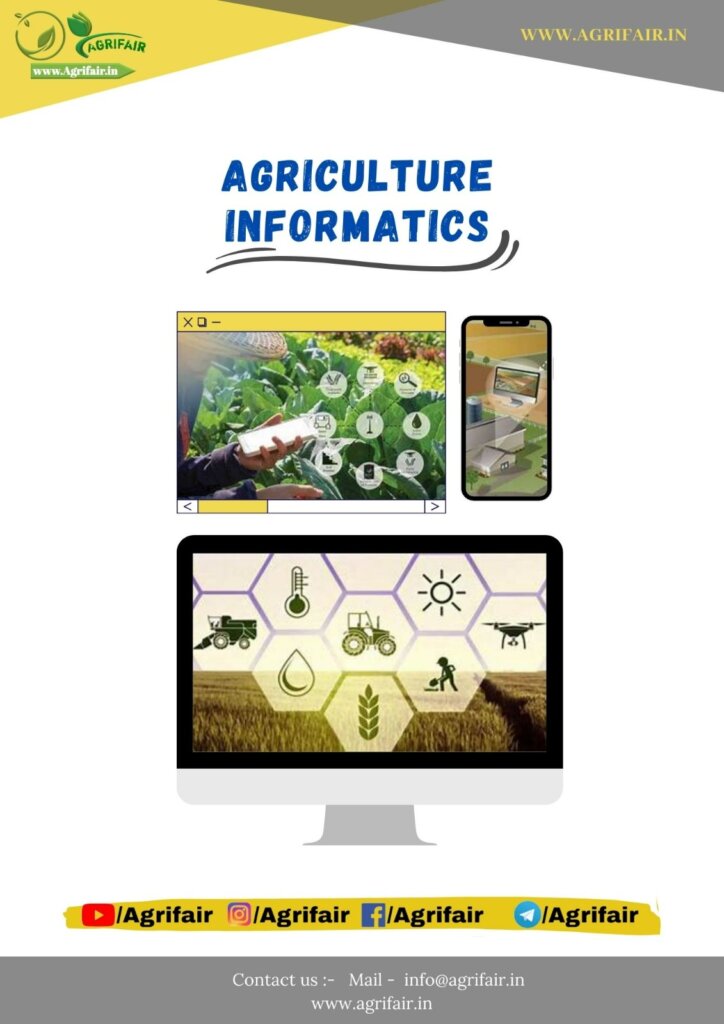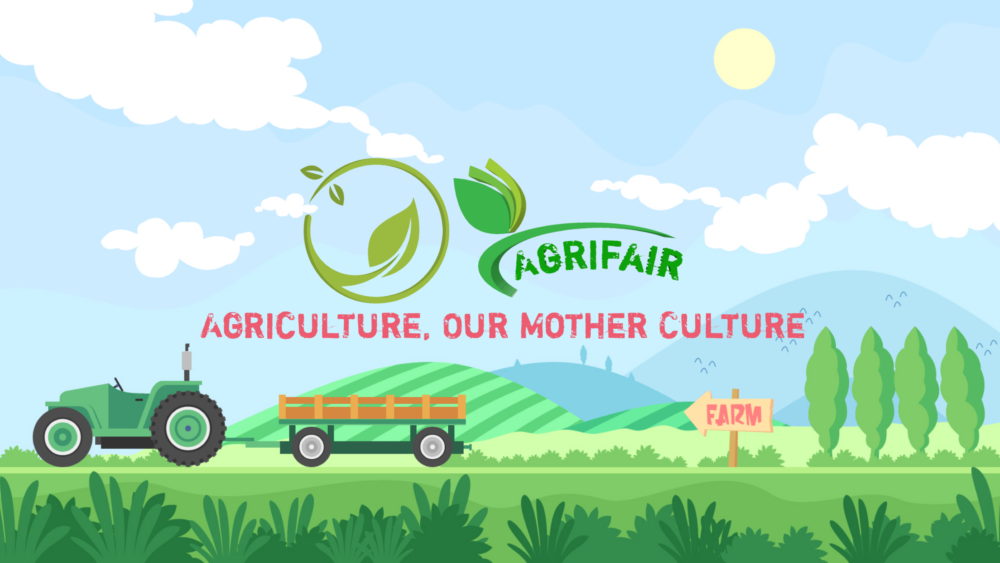Agriculture Informatics PDF: Revolutionizing Farming with Data-driven Insights
Agriculture has long been the backbone of human civilization, providing sustenance and livelihood to billions around the globe. In recent years, the integration of technology and informatics into agriculture, often termed “Agriculture Informatics,” has been revolutionizing the way we cultivate, manage, and optimize our agricultural practices.
The Role of Agriculture Informatics
Agriculture Informatics is the marriage of agricultural science and information technology. It involves the use of data analysis, digital tools, and advanced technologies to enhance the efficiency and productivity of farming. This integration enables farmers to make informed decisions based on real-time data, leading to better crop yields, reduced resource wastage, and improved overall management.
Benefits of Agriculture Informatics
- Enhanced Decision Making: With real-time data on soil health, weather patterns, and crop growth, farmers can make informed decisions that maximize their yield.
- Resource Optimization: Agriculture informatics helps optimize the use of resources such as water, fertilizers, and pesticides, reducing waste and environmental impact.
- Precision Agriculture: Through GPS and remote sensing technologies, farmers can precisely target their interventions, minimizing costs and environmental harm.
- Early Disease Detection: Monitoring tools and data analysis enable the early detection of disease outbreaks, preventing their spread and minimizing losses.
- Supply Chain Efficiency: Informatics streamlines the supply chain, reducing post-harvest losses and ensuring fresher produce reaches consumers.
You may like this Saguna Rice Technique
Challenges in Implementing Agriculture Informatics
While the potential of agriculture informatics is immense, its implementation comes with challenges:
- Access to Technology: Many farmers, especially in developing regions, lack access to the necessary technology and infrastructure.
- Data Privacy Concerns: Gathering and sharing sensitive agricultural data raises concerns about privacy and ownership.
- Skill Gaps: Farmers need training to effectively use digital tools, which can be a barrier in some areas.
- Initial Costs: Implementing informatics systems can be expensive, deterring small-scale farmers.
Current Trends in Agriculture Informatics
- IoT Sensors: Internet of Things (IoT) devices collect real-time data on soil moisture, temperature, and more.
- Big Data Analytics: Advanced analytics help derive insights from large volumes of agricultural data.
- Machine Learning: ML algorithms analyze data to predict crop diseases and optimize planting times.
- Blockchain: This technology ensures transparency and traceability in the agricultural supply chain.
Tools and Technologies in Agriculture Informatics
- Drones: Used for aerial surveys, crop monitoring, and even precision spraying.
- Satellite Imagery: Provides a macro view of large agricultural areas, aiding in planning.
- Mobile Apps: Farmers can access weather forecasts, market prices, and agricultural tips.
- Automated Machinery: AI-powered machines assist in planting, harvesting, and sorting crops.
Future Prospects and Developments
The future of agriculture informatics is promising:
- Predictive Models: Advanced models will forecast crop yields, helping with resource allocation.
- Climate Adaptation: Informatics will aid farmers in adapting to changing climatic conditions.
- Urban Farming: Smart technologies will enable efficient farming in urban spaces.
- Data Sharing Networks: Collaborative platforms will facilitate data sharing for improved insights.
Impact on Sustainable Farming
Agriculture informatics aligns with sustainable farming practices:
- Reduced Waste: Precise resource usage minimizes waste and pollution.
- Conservation of Resources: Optimized irrigation and fertilization conserve water and nutrients.
- Biodiversity Preservation: Informed decisions contribute to preserving local ecosystems.
Agriculture Informatics Applications
- Smart Irrigation: IoT-enabled irrigation systems save water by watering plants only when needed.
- Disease Detection: AI algorithms identify plant diseases through image analysis.
- Market Prediction: Data analysis helps farmers anticipate market demand and adjust planting accordingly.

Download the free book of Agriculture Informatics pdf
Book Detail: Agriculture Informatics
Language: English
Pages: 58
Author: BAU
Click below 👇 to Download
Ensuring Data Security and Privacy
As data collection increases, safeguarding data becomes crucial:
- Encryption: Data should be encrypted to prevent unauthorized access.
- Secure Platforms: Farmers should use trusted platforms for data storage and analysis.
- Ownership Agreements: Clear agreements on data ownership should be established.
The Intersection of AI and Agriculture
AI technologies like machine learning and computer vision are transforming agriculture:
- Weed Detection: AI-powered systems identify and manage weeds without human intervention.
- Robotic Harvesting: Robots equipped with AI pick delicate fruits with precision.
You may like this Introduction to Computer Applications pdf
Transforming Supply Chain Management
Agriculture informatics optimizes the supply chain:
- Real-time Tracking: Farmers can track produce in real time, reducing spoilage.
- Market Access: Informatics helps small farmers access larger markets and consumers.
Integrating Weather Forecasting
Accurate weather forecasts improve decision making:
- Crop Planning: Farmers can adjust planting and harvesting schedules based on weather predictions.
- Disaster Preparedness: Early warnings help farmers protect their crops from extreme weather events.
Improving Crop Management
- Soil Health: Data-driven insights enhance soil health and fertility management.
- Nutrient Monitoring: Informatics assists in monitoring nutrient levels and applying fertilizers accordingly.
Conclusion
Agriculture informatics is reshaping the agricultural landscape, enabling farmers to harness the power of technology for sustainable and efficient farming. With real-time data, predictive models, and smart technologies, the future of agriculture looks promising, ensuring food security and environmental preservation.
FAQs
What is agriculture informatics?
Agriculture informatics is the integration of technology and data analysis into agricultural practices to enhance efficiency and productivity.
How does informatics benefit farmers?
Informatics benefits farmers by providing real-time data for informed decision making, optimizing resource usage, and improving crop management.
What challenges does agriculture informatics face?
Challenges include limited access to technology, data privacy concerns, skill gaps, and initial implementation costs.
What are some current trends in agriculture informatics?
Trends include IoT sensors, big data analytics, machine learning, and the use of blockchain for supply chain transparency.
How does agriculture informatics contribute to sustainability?
It reduces waste, conserves resources, and promotes biodiversity preservation through data-driven decision making.



